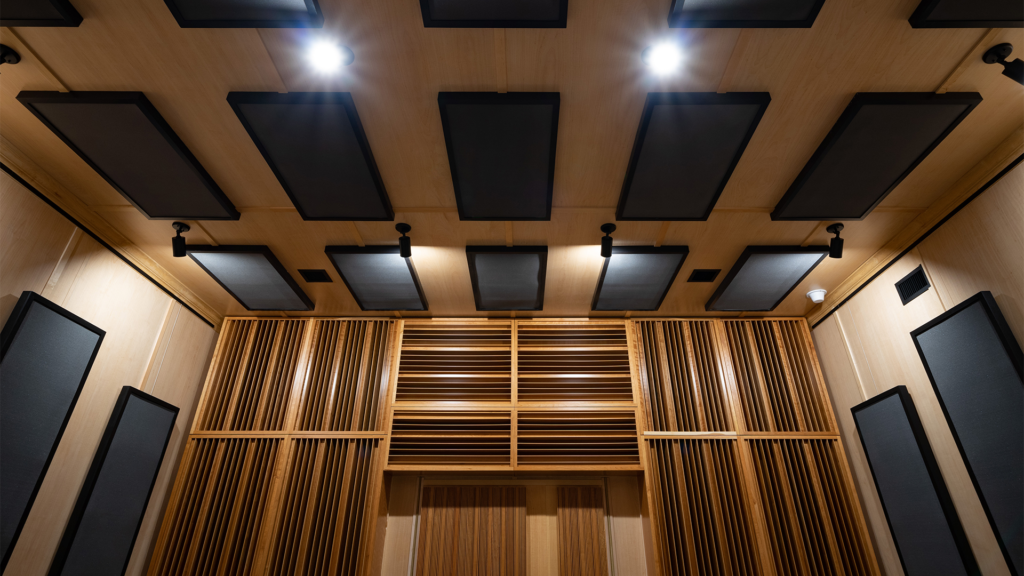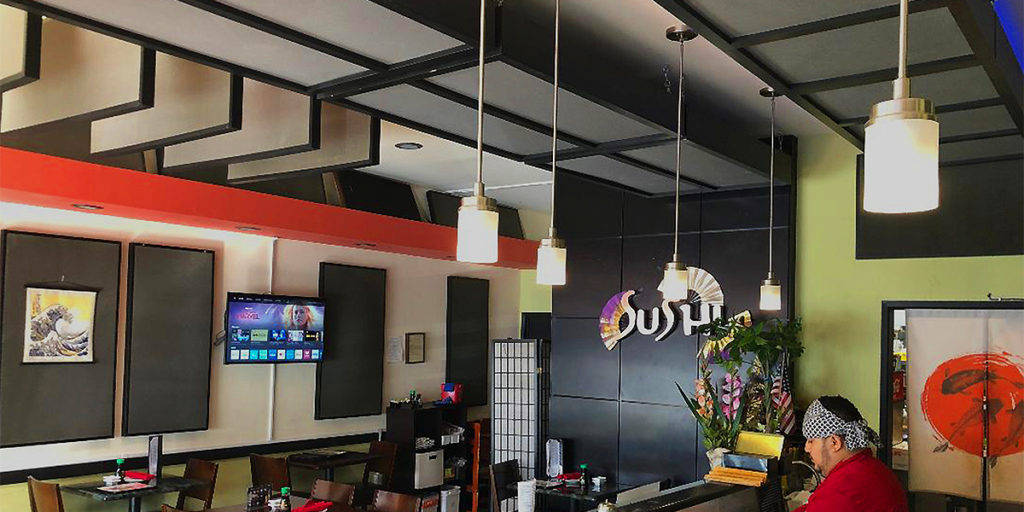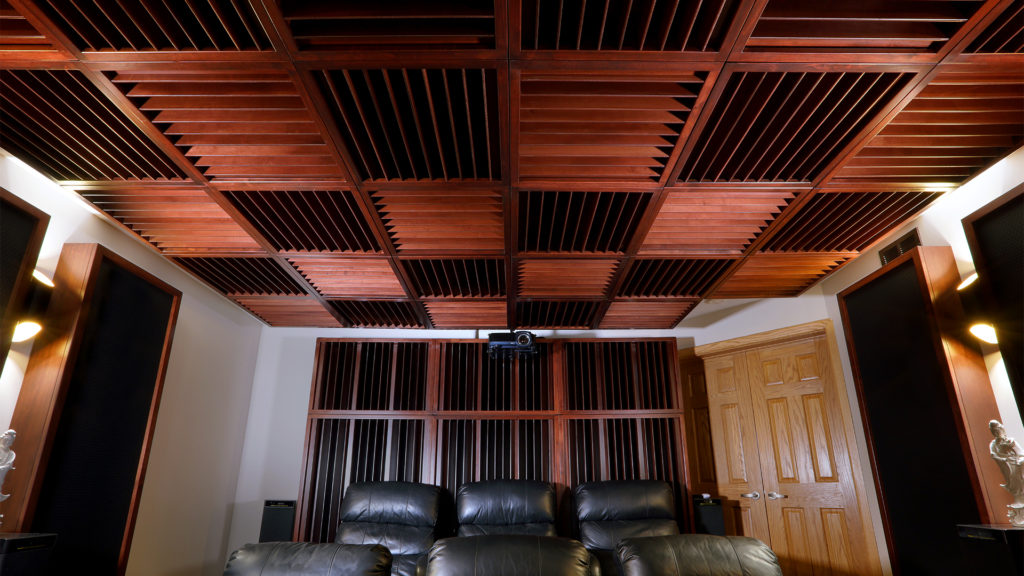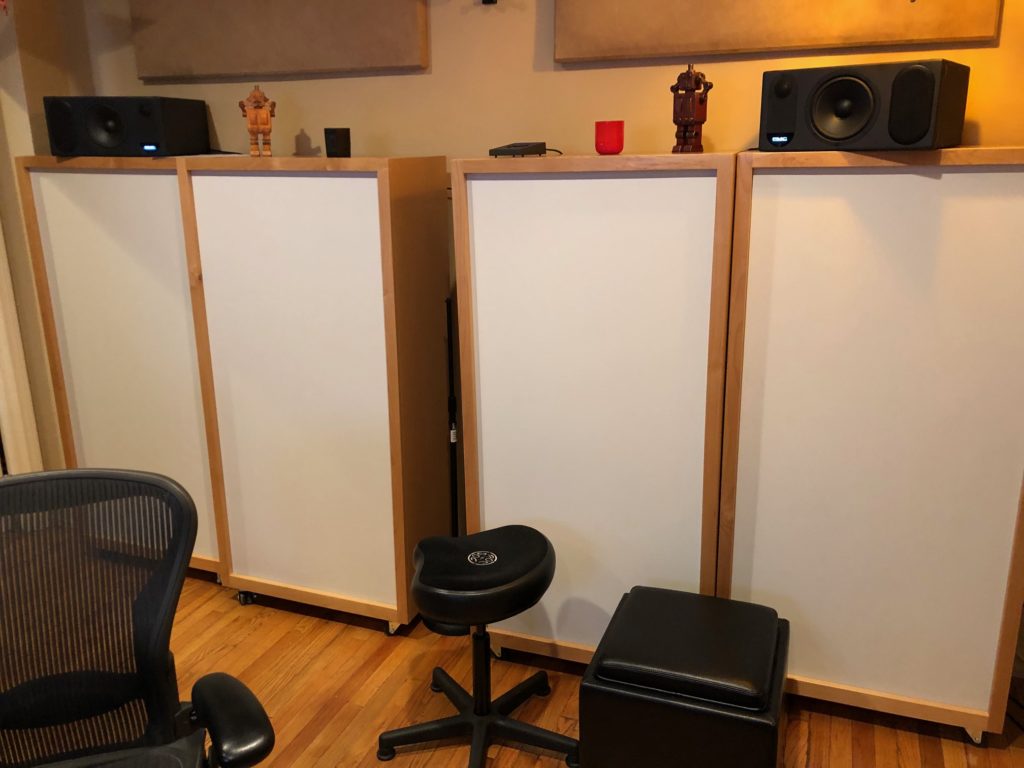
Fiberglass panels are widely used to absorb the sound within a room. Fiberglass panels are popular for only one reason. Fiberglass panels are cheap but in this case you get more than what you pay for. Fiberglass by definition is toxic. All you have to do to realize this is to look at the installation instructions. Most fiberglass panels have fiberglass or building insulation inside of them. This material type has particles or fibers that when become airborne get within your lungs. This is the last material type you want inside your lungs. These fibers are made of metal, glass, and plastic and can ride upon air currents that you will breathe in. Along with this health risk, fiberglass panels have poor acoustical performance. They do absorb energy and are cheap. However, they over absorb the middle range frequencies which has a negative impact on music and voice. They drain the life out of the harmonics which is where the emotional content of the music exists. Fiberglass panels are not a quality acoustic tool. There are many others that work much better. https://www.corrosionpedia.com/definition/2474/fiberglass.

When using a panel to absorb energy within your room, you must first decide on the acoustical objective of the room you are trying to treat. You must first look at the usage of your room. What will you be doing within the room as it relates to music and voice? Will you be recording a single instrument within your audio room? Will you be recording a band with multiple members? Is your room just for listening to music through two channels or is it a home theater room with multiple channels of energy. The room usage must be defined since the usage indicates the energy requirements that the room must be treated for in order to manage the energy successfully. When you are using absorption within your room no matter what the usage, you must be concerned with the rate and level of absorption to match your usage requirements. https://www.acousticfields.com/product/acoustic-foam/

Not all sound absorption technologies are created equal. https://www.thermal-engineering.org/what-is-building-insulation-home-insulation-definition/ As a general rule in quality acoustical treatment it is best to stay away from fiberglass panels. You need to stay with technologies that are specifically designed for music and voice. Music and voice require special rates and levels of absorption to manage excess energy and reflections. When you are dealing with music and voice in smaller rooms, you must use a technology that was specifically designed to deal with the fundamentals and harmonics of music and voice. At Acoustic Fields, we spent 8 years and over 2 M dollars developing technologies that are specific for music and voice. When you are dealing with the energy from music and voice, you must be concerned with the rate and level of absorption. It is the rate and level of absorption that makes the difference from a natural sounding room to one that is dead and lifeless due to over absorption from the use of fiberglass panels. https://www.acousticfields.com/product/acda-10-studio/

Let’s examine our middle and high frequency absorption technology from Acoustic Fields. www.acousticfields.com. The most critical frequency range for music and voice is the 125 hz. – 500 hz. region. This is the frequency range that must be treated with care and concern since it is where our vocals lie. Take a look at the graphic below. Pay particular attention to the 125 hz. – 500 hz. frequency region. Notice how smooth and linear the curve is for our technology versus the competition. Notice how the response curve of the other foams has what we call in acoustics, spatial irregularities. They have dips in the rate of absorption right in the critical range for voice and music. This is why they can never sound right for voice and music.

When it comes to your critical listening audio environment, you must develop a sonic strategy. Without a plan of how you want your room to sound like, you will be forever chasing your tail. Some people want as much resolution as possible from their sources. Others want a large soundstage that is wide, tall, and has depth. Others want a balance between resolution and soundstage presentation value. The subjectivity of people’s goals makes it a priority that you start with a strategy that will be the end point you work towards. In small room acoustics, every step you take is built upon the previous step taken, In order to avoid tripping over yourself, you must decide what you want in your room. Most people don’t plan to fail but with acoustical treatment if you fail to plan you are headed towards costly mistakes that may not be rectified. https://www.acousticfields.com/home-theater-acoustics-service/







Actually, fiberglass is more effective at absorbing bass frequencies than rockwool is, as long as it is thick enough.
Denser materials are more effective in thin panels meant for higher frequencies and less dense materials are more effective in thick panels meant for lower frequencies.
A thick panel made of rockwool starts reflecting bass frequencies back into the room where a fiberglass panel will absorb them all the way through the panel.
Note I’m talking about 12+ inch panels, but if you are serious about trapping bass then fiberglass is the way to go.
You can confirm what I have said using a porous absorber calculator which is available online.
Limp mass material types can never achieve the proper rates of absorption that music and voice require.